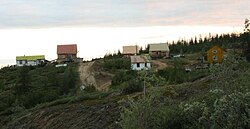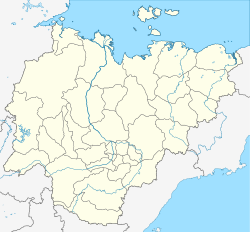|
Northeast Science Station
The Northeast Science Station of the RAS (Russian: Северо-Восточная научная станция РАН) is an Arctic research station located in Chersky, Sakha Republic in Northeast Siberia. It is one of the world's three largest Arctic stations.[2] DescriptionThe Northeast Science Station is used as a year-round base for international research in arctic biology, geophysics, and atmospheric physics. The station also houses the administration of the Pleistocene Park, a local experimental wildlife preserve of 160 km2. Named after Russian explorer Jan Czerski, Chersky is sited on frozen Pleistocene carbon. The sediments here are made up of 50% ice, and 50% loess, which is a windblown sediment - the carbon content of loess deposits is five times that of a rainforest floor. During each annual melt between 2 and 5% of the stored carbon in the loess deposits is lost.[3] Far Eastern Federal University is planning to open an Arctic campus at the research station. “At the station, students and young scientists will study permafrost melting; greenhouse gas emissions; hydrates conservation; biodiversity; land, atmosphere and surrounding seas pollution; and other climatic, biological and environmental issues,” according to a press release.[2] Personnel and fundingResident staff consists of Nikita Zimov (director), Sergey Davydov, Galina Zimova, Sergey Zimov, Anastasija Zimova (bookkeeper).[4] Additionally, around sixty international researchers visit the institute annually.[4] Salary of the resident staff is paid by the parent organisation, the Russian Academy of Sciences. The station itself is funded by the Max Planck Society.[4] See alsoReferences
External linksWikimedia Commons has media related to Northeast Science Station. |
||||||||||||||||||||||

